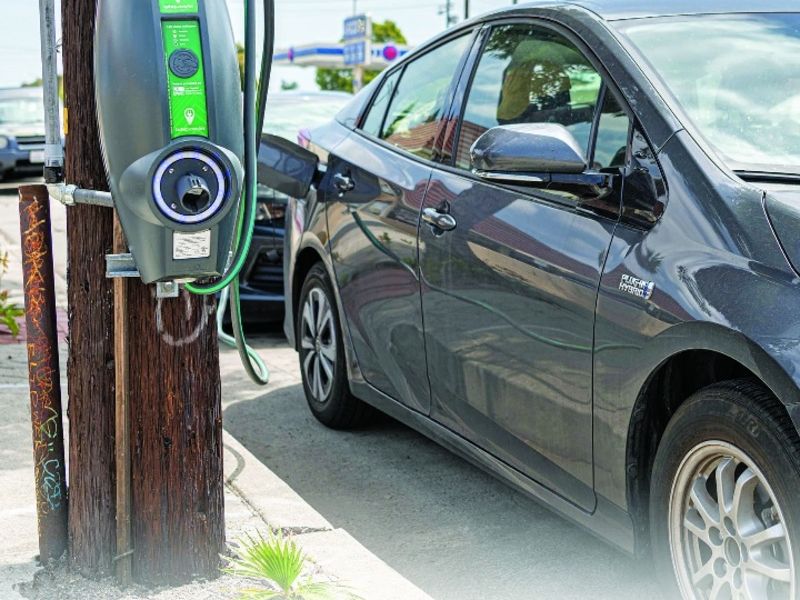
The push to widen the adoption of electric vehicles in the U.S. is driving the conversion of utility poles and streetlights into EV charging destinations.
Installing streetlight and pole- mounted stations is part of a growing movement to create more curbside EV charging options in urban areas. The idea is to enhance the feasibility of owning and operating electric vehicles in areas where drivers are less likely to have access to off-street garages, driveways or parking lots.
Kansas City, Mo., plans to install EV chargers on 30 to 60 streetlights or utility poles before the end of this year as it prepares for the shift from combustion-powered vehicles to EVs. The initiative, part of a federally funded pilot project with Metropolitan Energy Center, an environmental nonprofit group, is aimed at testing curbside charging of EVs at existing on-street parking locations, to expand EV access for renters, multifamily building residents and taxis.
“The use of personal EVs in Kansas City is expected to grow significantly,” Kelly Gilbert, executive director of the energy center, told Automotive News via email. “That growth presents substantial public health benefits by reducing local transportation emissions. As new electric vehicle models become more available and the used-vehicle market grows, Kansas City will need to make sure that there is a robust and affordable electric vehicle charging network in place.”
Blink Charging, which builds pole-mounted EV charging stations for both public and private entities, sees streetlight and utility pole charging destinations playing a pivotal role in the company’s business strategy and the overall future of zero-emission mobility.
“People can just be … a lot more comfortable if they’re able to see infrastructure where they work, where they live and they’re more inclined to buy an EV if they know that that infrastructure is available to them,” said Michael Farkas, founder and CEO of Blink Charging.
Blink Charging’s pole-mounted charging devices feature a mounting bracket and hardware kit used to attach the company’s IQ 200 charging stations to any new or existing pole, transforming the location into a Level 2 charging station. The charging devices also are adaptable to the more power-efficient LED streetlight systems, enabling every LED streetlight to be converted into a potential charging point.
The city of Los Angeles, which began installing EV charging devices on wooden utility poles in 2016, is looking to ramp up.
L.A. plans to install 150 streetlight chargers annually, in a project spearheaded by the Bureau of Street Lighting and funded by the Department of Water and Power.
The city currently operates 430 streetlight chargers and 45 wooden utility pole chargers in the ongoing program with the two agencies.
The city aims to add another 40 new freestanding curbside charging locations per year, as part of a water and power department-funded partnership with the Los Angeles Department of Transportation and BlueLA, an electric car-sharing service owned and operated by Blink Mobility, a subsidiary of Blink Charging.
The program is targeted primarily at disadvantaged neighborhoods. Each curbside charging location will have five charging stations. The program also includes low-cost EV rentals, available on a per-ride or per-day basis.
Phase 2 of the project, currently in negotiation, includes the installation of 60 new curbside charging locations.
The streetlight, pole-mounted and curbside EV charging solutions are an important part of L.A.’s Green New Deal, an aggressive mobility plan to increase the percentage of zero-emission vehicles in the city to 25 percent by 2025, 80 percent by 2035 and 100 percent by 2050.
“Curbside, publicly accessible charging is a crucial component to increase access to charging for EV drivers in Los Angeles, especially when chargers are installed in communities where residents may not have the ability to install Level 2 charging,” said Yamen Nanne, electric transportation program manager for the Department of Water and Power.